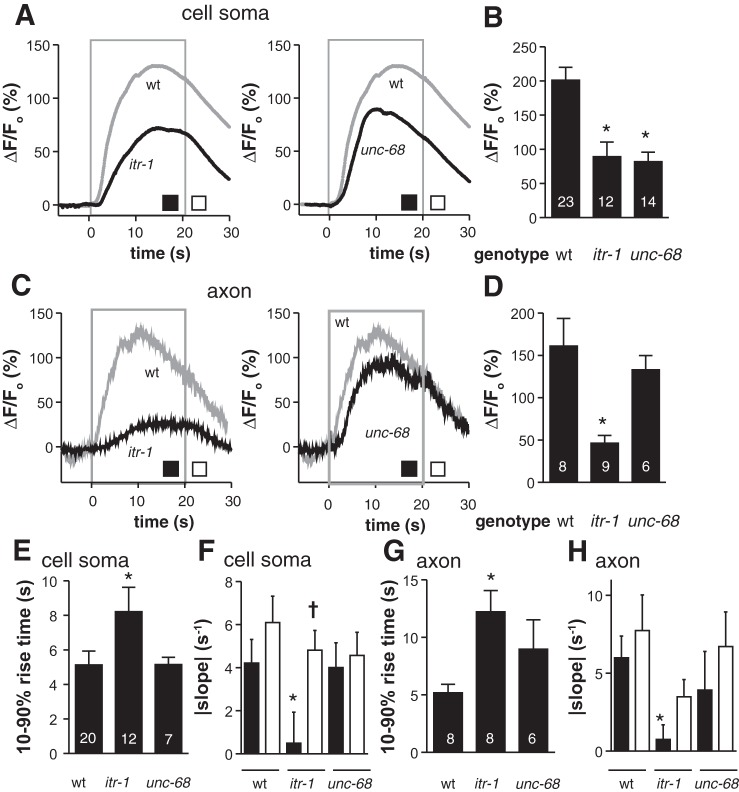Fig. 2.
Ca2+ release from intracellular stores amplifies and shapes Ca2+ dynamics in ASH neurons. A and C: time courses of 1-octanol-evoked Ca2+ transients in ASH somata (A) and axons (C) in wild-type and inositol tris-phosphate receptor (IP3R) mutants (left) or ryanodine receptor (RYR) mutants (right; itr-1 and unc-68, respectively). 1-Octanol was applied between 0 and 20 s (gray box). B and D: peak amplitudes of somal (B) and axonal (D) Ca2+ transients. E–H: kinetic analysis of somal (E and F) and axonal (G and H) Ca2+ transients: signal rise times (E and G), decay slopes (F and H). Black bars in F and H indicate desensitization in the continued presence of 1-octanol; white bars indicate decay rate after 1-octanol removal (rates measured at the intervals denoted by the black and white boxes in A and C, respectively). Values are means ± SE; nos. within bars indicate n. n = 13 wild type, 12 itr-1, and 7 unc-68 (A and F); n = 6 wild type, 8 itr-1, and 6 unc-68 (C and H). *P < 0.05 compared with corresponding wild-type measurement. †P < 0.05 compared with itr-1 desensitization rate.

